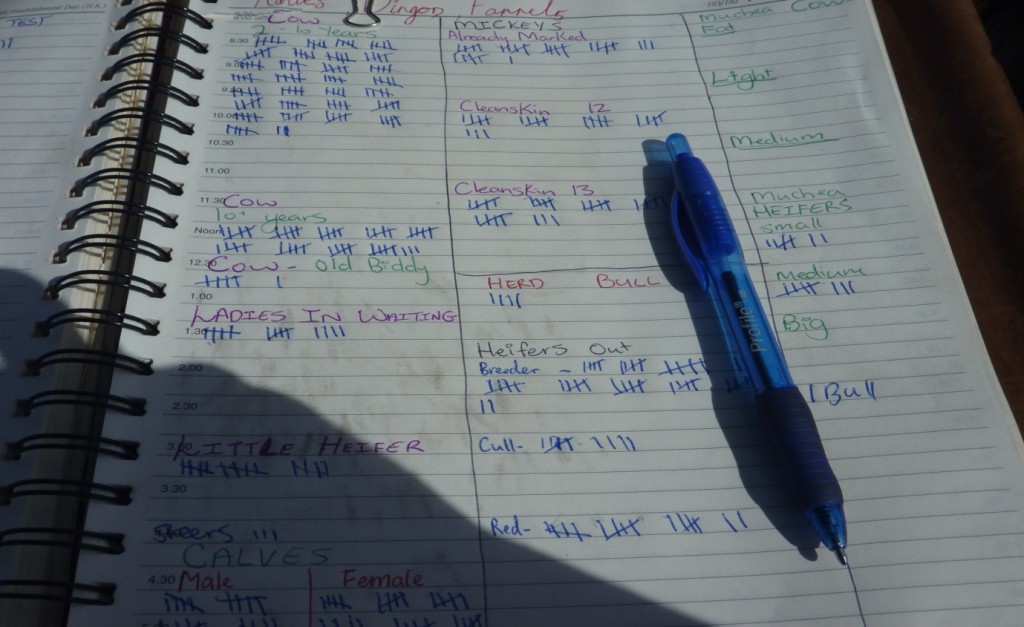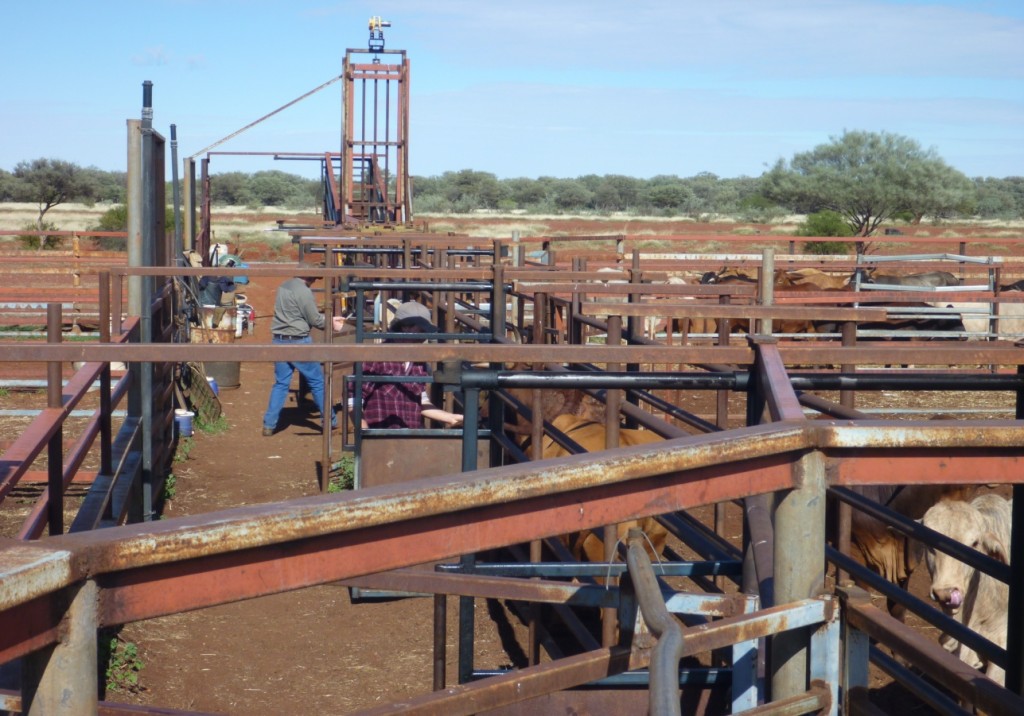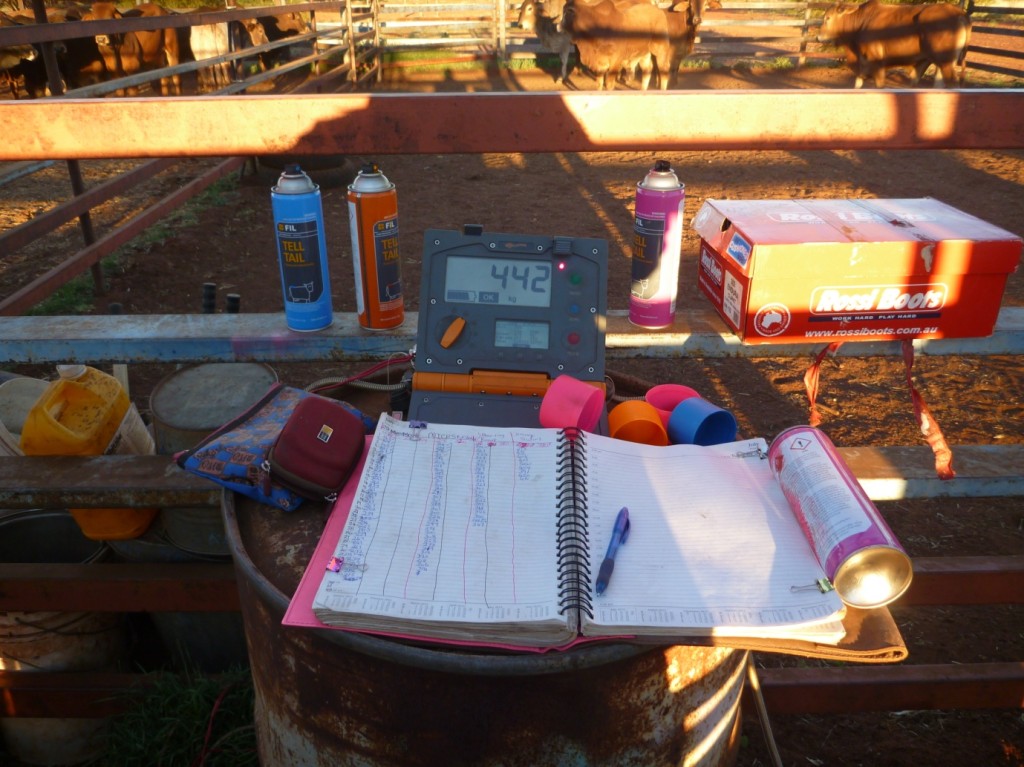Yard Time
Host: Noreena Downs Station
Written by Kate Paull – Owner, Noreena Downs Station.
So once the cattle have spent the night in a paddock (or cooler paddock if they have walked a long way), they are all good to head to the yards so into the wing way (fence each side to guide them) they go and fingers crossed no bugger ups. It’s a treat one of many watching some cattle run to the yards with their tails up and kicking and bucking, not every yard up goes to a tee though.
Once yarded up we give them a while, 30 minutes or even ten minutes depending on mob, to mother up and get back off their high of excitement.
Cattle are then penned lightly into the force yards (smaller pens before draft pound). Using a pound draft which is a round yard with gates that swing open inwards, I stand on the draft platform which is outside of the pound on the side with tally book in hand and pull these poles that open the gates. I put the cattle in their correct lines which means they are separated into their groups, before the cattle get to this draft they enter the draft pen where one worker will operate a gate and let two or three in depending.
For Noreena our drafting lines are breeder (the diamonds) cows, herd bulls and older heifers, Mickeys 190kg and above, Muchea sale cattle, weaner heifers six months and older, calves 5-6 months and under, sometimes cows to be pregtested, strays and random bits.
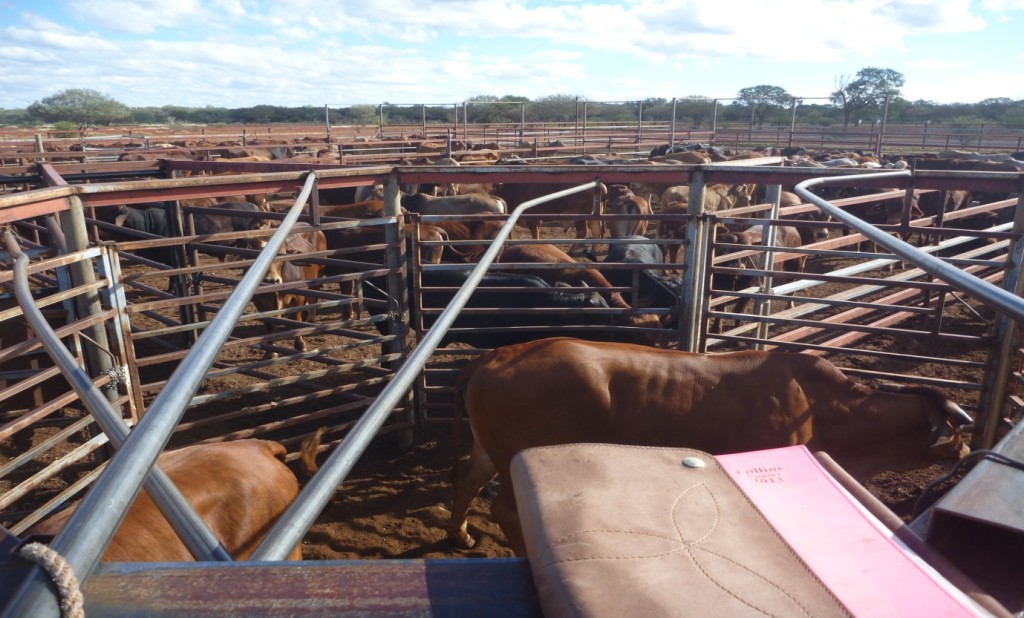 Draft pound at homestead yards.
Draft pound at homestead yards.
While we draft we don’t use sticks, whips, or lots of noise as we are trying to make the cattle have a positive attitude towards the yard. The only stick we once in a blue moon use is a really long stick that we use to poke bulls and stubborn cows when they bail up and don’t want to get up the race. It can be dangerous for a human to get in with a 820kg average bull and try to push him around or a grumpy old cow, horn rack to go with it, there is a muscle on their back legs you can hold your thumb on so they can’t kick you but you gotta get that close yet.
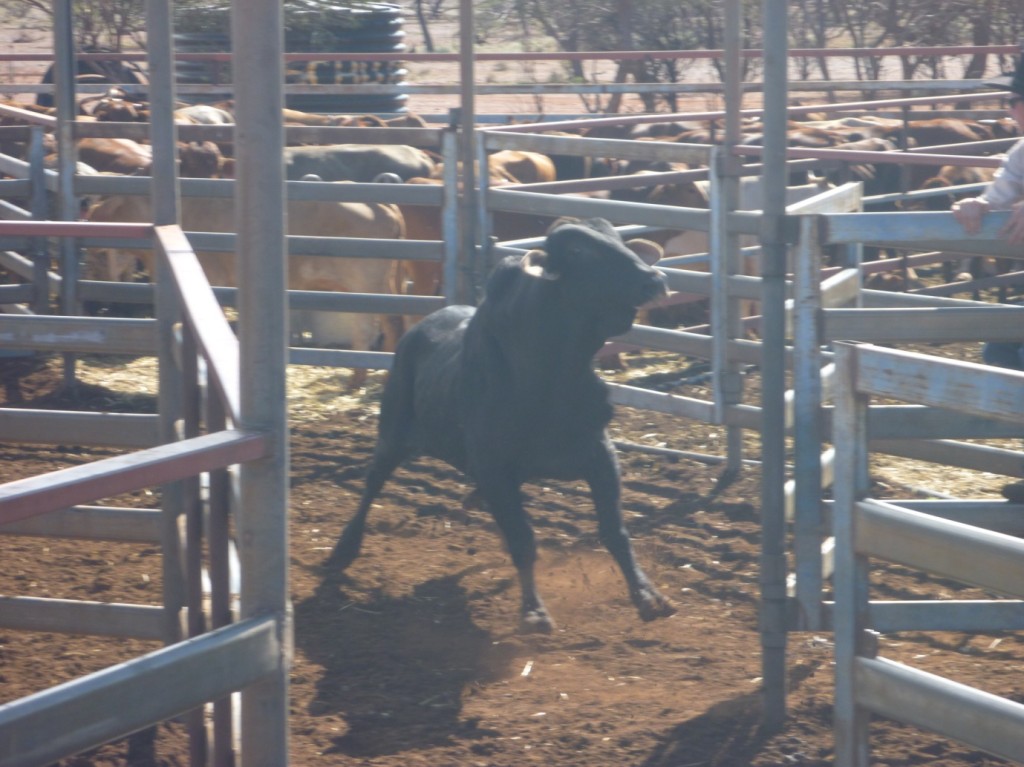 Cranky Mickey bull telling Hayden where to go.
Cranky Mickey bull telling Hayden where to go.
As we draft the breeder girls and bulls, they go up the race to have their yearly fashionable haircut the bangtail bob (you run hand down the cattle’s tail go 5 to 6 cms pass the last bone in the tail then put your bangtail knife into the hair of the tail put a special wrap in and pull, and the bangtail bob is established).
We bangtail so we know that beast has been through the yard and not to count it again as we have to know our stocking rates for several purposes – land management and future income foresight and number controlling to name a few. Also interesting for the summer when you are doing mill runs to see which cattle missed the yard known as a long tail it gives you a better idea of what really is on the place.
When Dad used to do the drafting Mum and I over the years did a good amount of the bang tailing, certain cattle remembered us year in year out and would see us walking the race with the bangtail knife and flick their tail out for us to grab to bangtail. Who would have thought the bangtail bob was so popular?
I haven’t done a lot of Noreenas bang tailing in the last few years as I’ve been doing the drafting etc. but, I was walking the race the other day as we were doing weaner heifers and we had a few cows in with them I walked passed one of our old biddies and she flicked her tail out at me as I got to her rump. The blokes had even walked passed her and she didn’t flick for them, obviously I am the preferred hairdresser for her haha! This will sound soppy but that little action touched my heart and put a smile on my dial.
Once drafting is finished, any naughty cows or neighbours cows are mothered up to the calves, once that rigmarole is over then we mark our future generation of calves so they can go back to their mothers ASAP to grow up into breeders or sale cattle. Once the breeder cows have all mothered up with their calves they are then let out bush for another season.
We then start organising our sale cattle, while this is going on and previous to it the cattle in the yards are being fed hay and watered. If the breeding cows (big mob) spend more than 15 hours approx in yard they also get fed hay they are on water all the time and so are the calves.
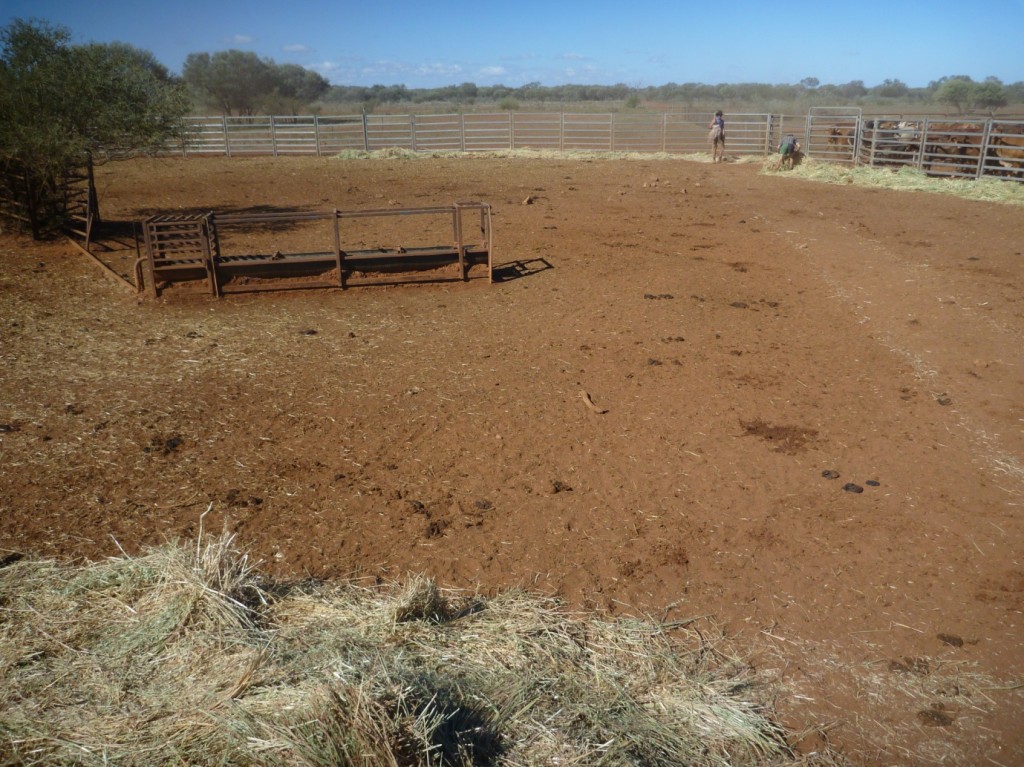 Feeding out hay for breeder cows at Stockroute yards.
Feeding out hay for breeder cows at Stockroute yards.
We live export a lot of Mickeys (little men with their testicles in) to Israel, the Middle East, and Malaysia. I take scrupulous care when my staff and I get the Mickeys ready for live export, every boy must be of reasonable temperament (no full blown nutcases as stockmen have to handle these cattle at close quarters on the boats), no injuries, dingo bite scarring, broken bones even old healed ones, no pinkeye, blind eyes or oncoming illness. Occasionally I make a mistake and I WEAR it, everyone makes mistakes, this is how we learn. All Mickey bulls must be earmarked, NLIS tagged for trace-ability services and de-horned down to four to five inches from the base.
Why we de-horn . . . well ever heard of the saying ‘cruel to be kind’, well we de-horn due to a lot of things. Cattle can gore guts, cut skin, poke eyes out or break each other’s ribs on other cattle or flip each other into the air with longer horns. When some older Mickeys are grumpy and in a closer vicinity of each other like in their face they do what blokes do they start throwing punches, cows also do this.
Also this is to protect the stockmen in the yards, truck drivers carting the cattle as they may have to get in the pen to sort something out and you never know when it’s gonna go wrong for a truckie, stock agents, importers, exporters, stockmen on the boats and the list goes on. SAFETY and PROTECTION FOR MAN AND BEAST.
The Mickeys are then all good to be drafted into their weight groups: 180-250kg, 251-300kg, 301- 350kg, 351- 450kg, as the weight categories get higher the cents per kilo price gets lower.
We get our cull (rejects) cattle ready for Muchea sale yards, these cattle will include steers and big steers called bullocks, scrub bulls, retired herd bulls, ugly heifers and cows unsuitable to breed from, Mickeys not suitable for an export boat, barren cows and dangerous cattle.

